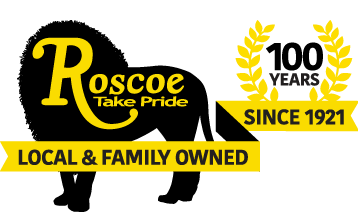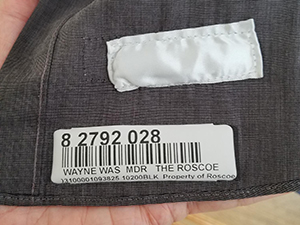Norman Joseph Woodland is said to have sketched out the idea for the first barcode in sand, while sitting on a Florida beach in 1949, sparking a transformation of the way entire industries track their products, their processes and their inventory.
It just goes to show you that the concept of “a day at the beach” is lost on some people.
Still, thanks to Woodland, his co-inventor Bernard Silver, and a forward-thinking supermarket executive who drove the evolution of Woodland’s idea into the pattern of stripes found on everything from hospital patients’ i.d. bracelets to airline boarding passes, people in almost every industry on the planet have more time to do more important things than the tedious manual tasks that barcodes made unnecessary.
It was 45 years ago last week that a cashier in Ohio scanned the first UPC code, ringing up a 10-pack of Juicy Fruit gum from a barcode on the wrapper. Inspired by the dots and dashes of Morse code, Woodland and Silver’s barcodes work by encoding price, product information and other data into a series of vertical lines of various widths that are read by photosensitive scanners.
How the Meticulous Tracking of Work Uniform Garments Works for Roscoe Clients
At Roscoe, the addition of barcodes to our work uniforms in 1993 allowed us to automate the tracking of thousands of garments that previously had to be sorted by hand, with employees reading information from a label sewn into each garment.
As we grew, and new technology became available, we explored every opportunity to improve our processes. And sorting is a big part of the process in the work uniform industry.
In 2003, we took advantage of the next generation of barcode efficiency with RFID chips that allowed garments to be scanned automatically as they move past an antenna that reads and transmits the chip information to a central database.
Today our tracking system uses Ultra High-Frequency RFID chips that allow us to scan multiple garments at the same time – up to 1,000 garments in 10 seconds. It’s part of our state-of-the-art German-engineered sorting system that provides near perfect accuracy, continuous visibility into the process, and enables us to produce perfect bundles every time, in less time.
We’ve dramatically increased the speed of the process, gaining more time on the back end for garment inspection and quality controls. Through our efficiency we’ve also been able to keep costs down for our clients.
A Work Uniform Program Built on Continuous Improvement
It’s innovation we’ve embraced as part of our commitment to continuous improvement. We never stop looking for ways to do things better. So we couldn’t be happier that Norman Joseph Woodland found a little bit of inspiration on the beach and did not use it to build a sand castle that day in 1949. We still use ordinary barcode tags on our garments, in addition to the high-frequency RFID chips. They allow our route service reps to quickly ascertain the wearer’s name and locker number and they provide a layer of backup.
It’s a system that means Roscoe clients never have to waste their time worrying about their work uniform programs. That’s time they can put toward running their businesses instead – or, now that summer has finally arrived in the Chicago area – spend on a beach somewhere.
For more information on how our processes can leave you with more time and less worry, give us a call or click on the link below.
Contact us to learn more about our work uniform rental services

